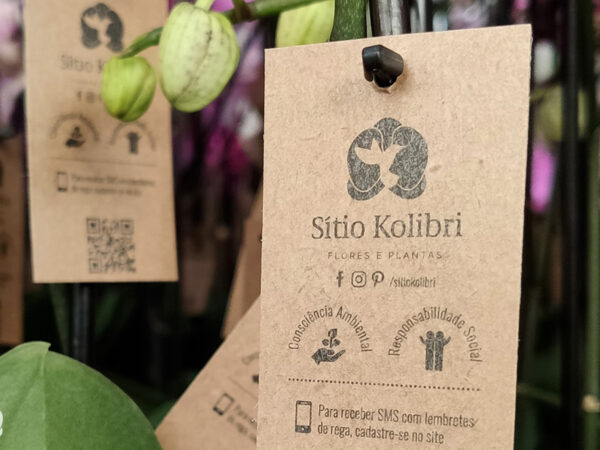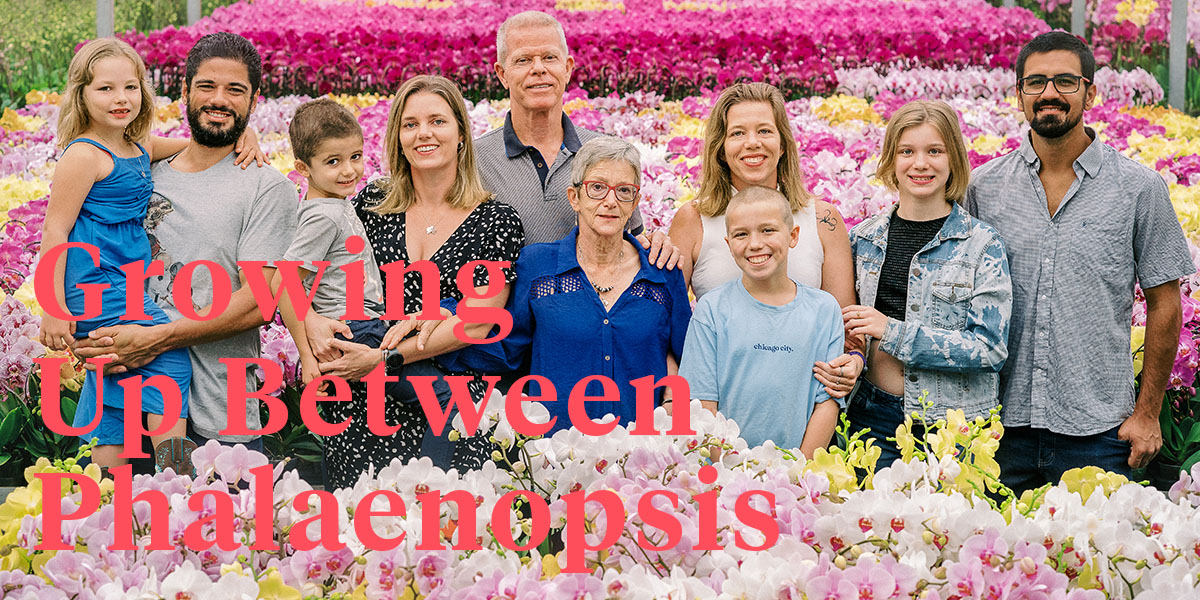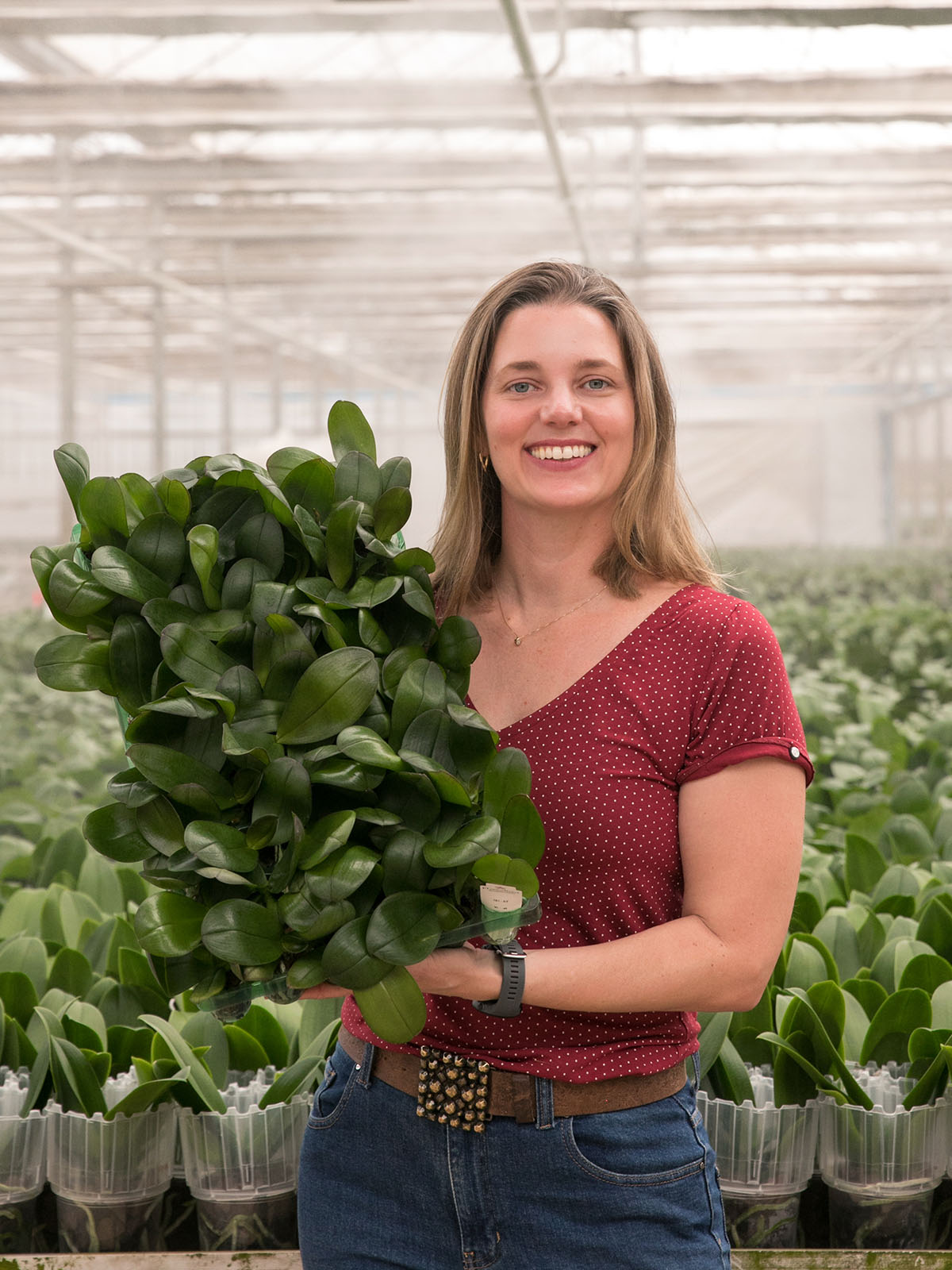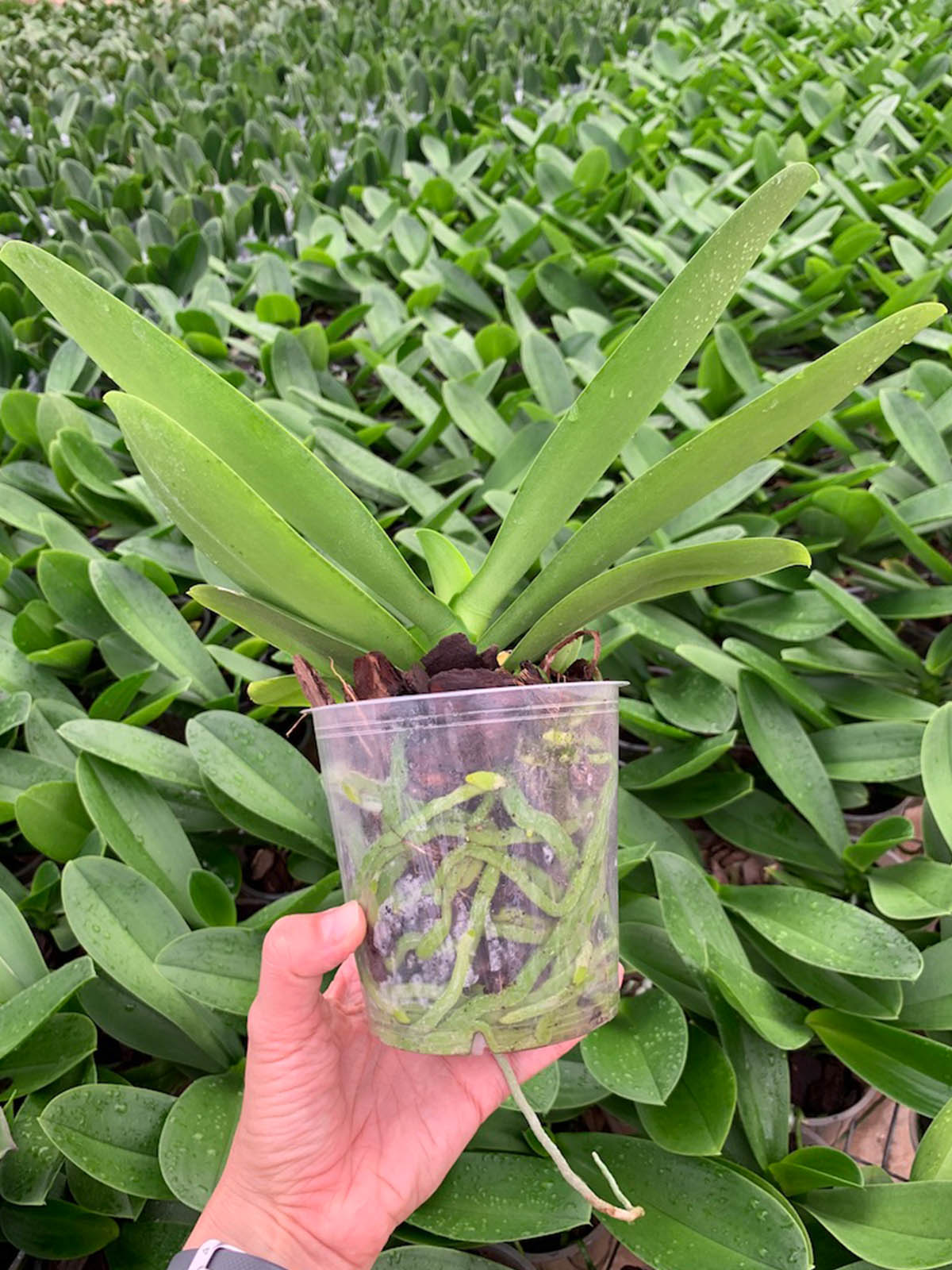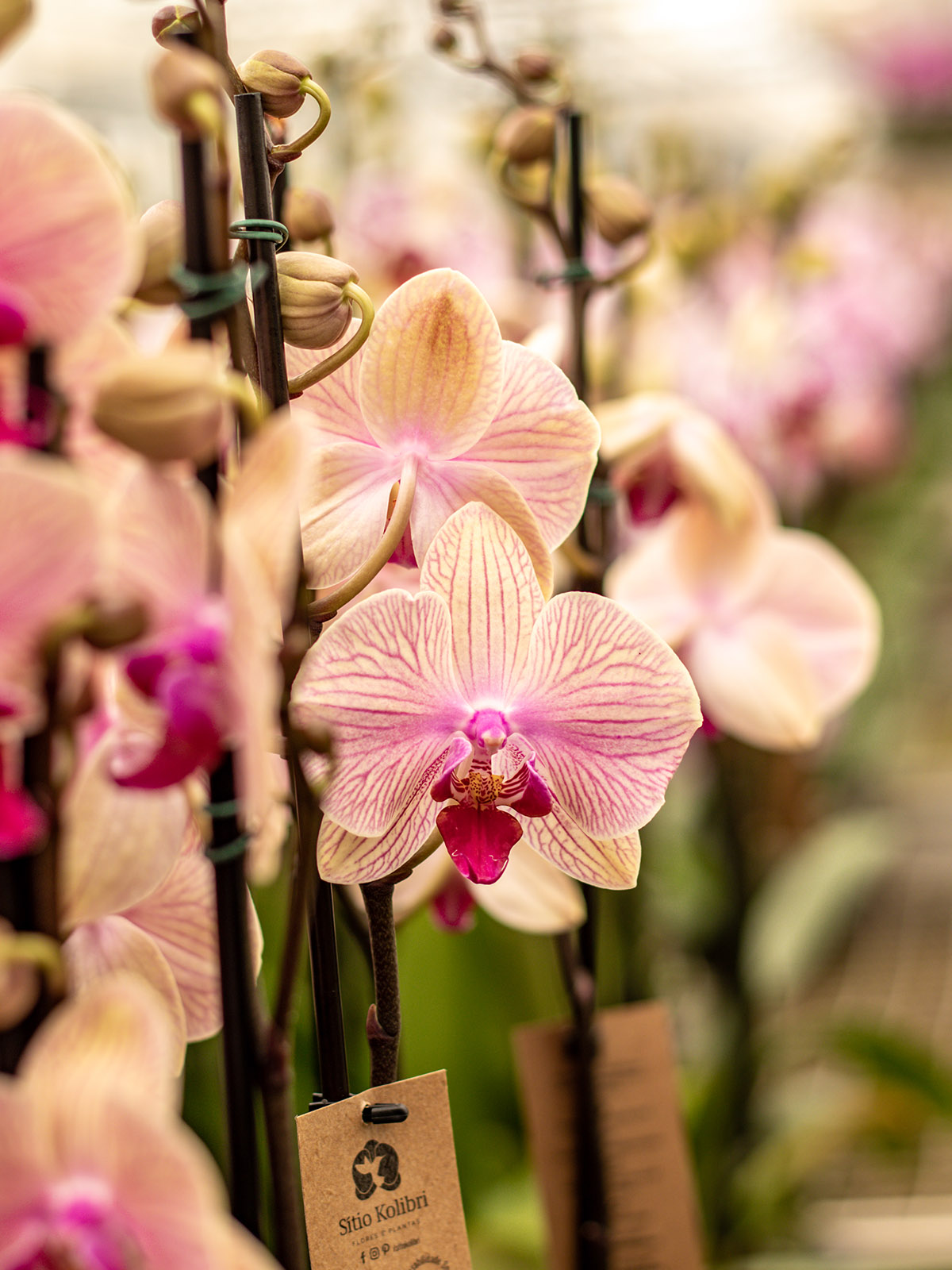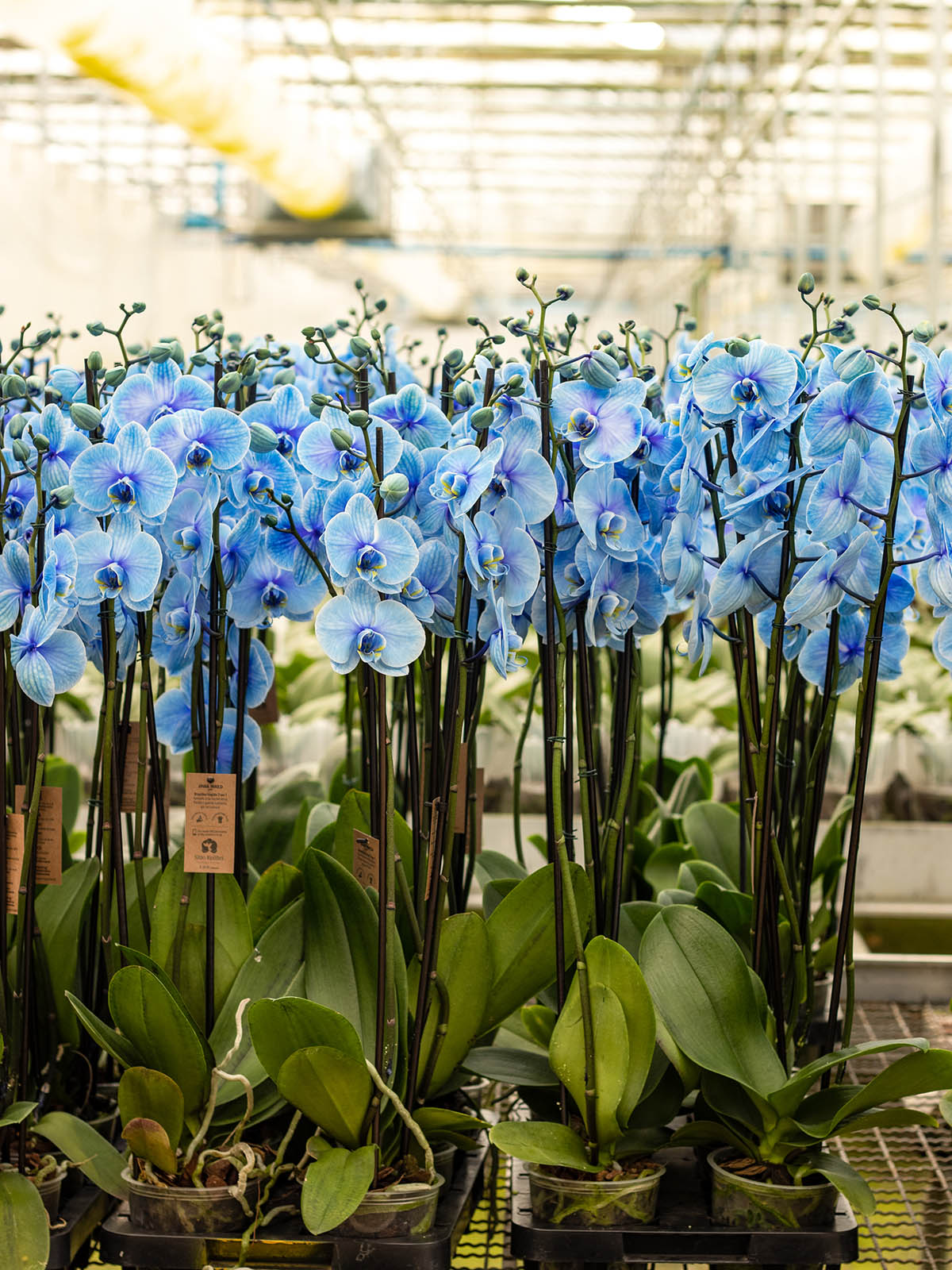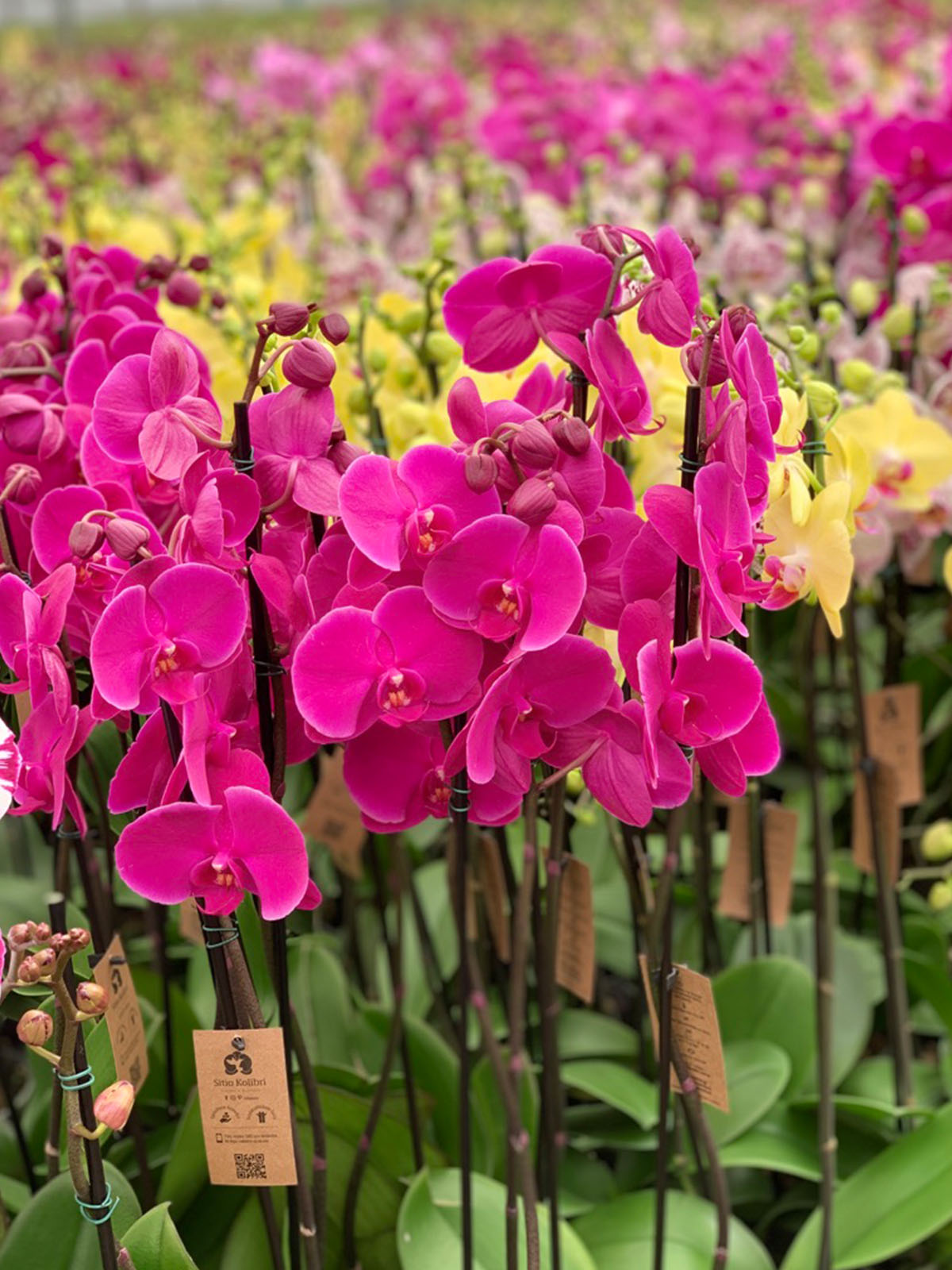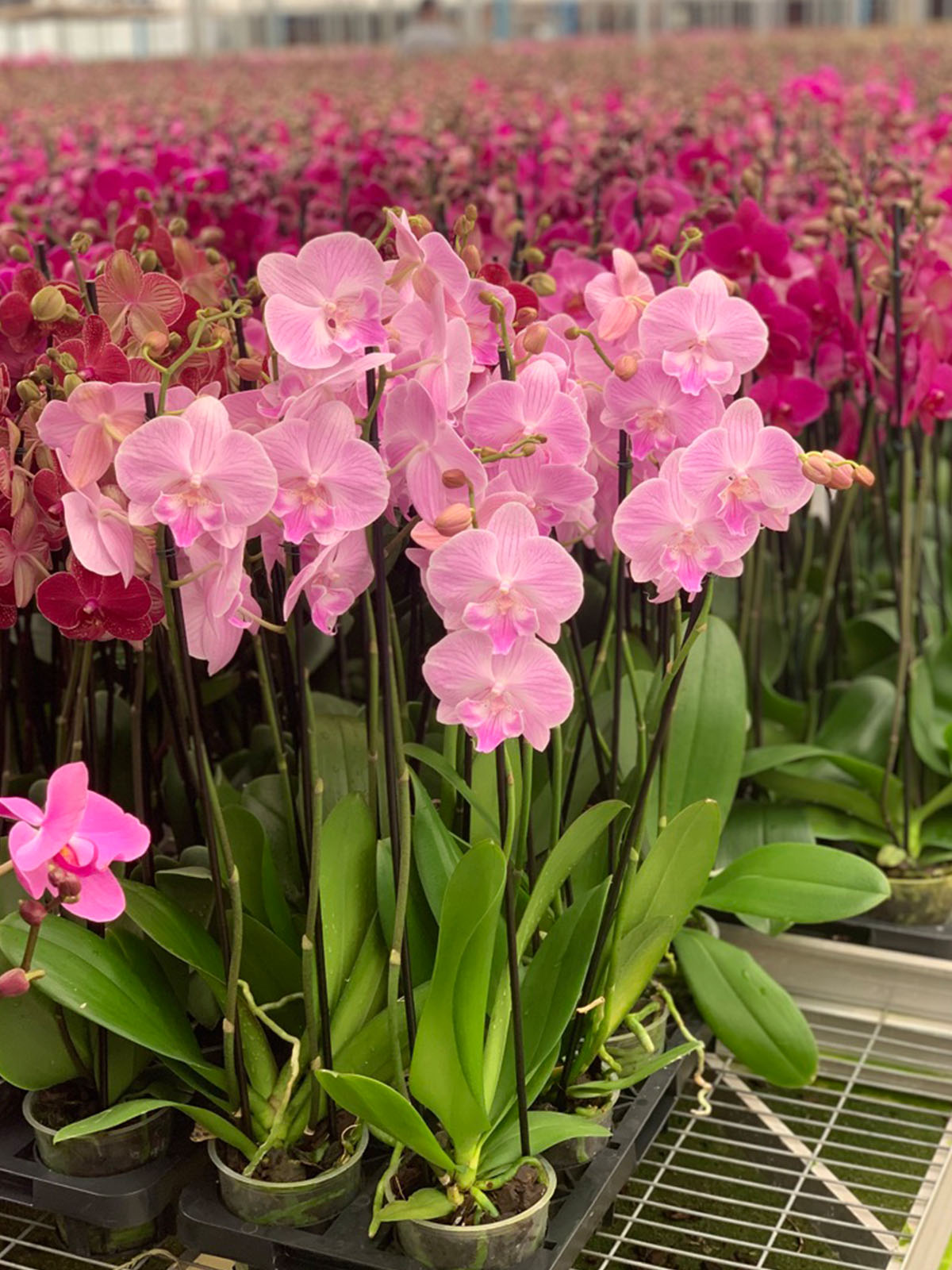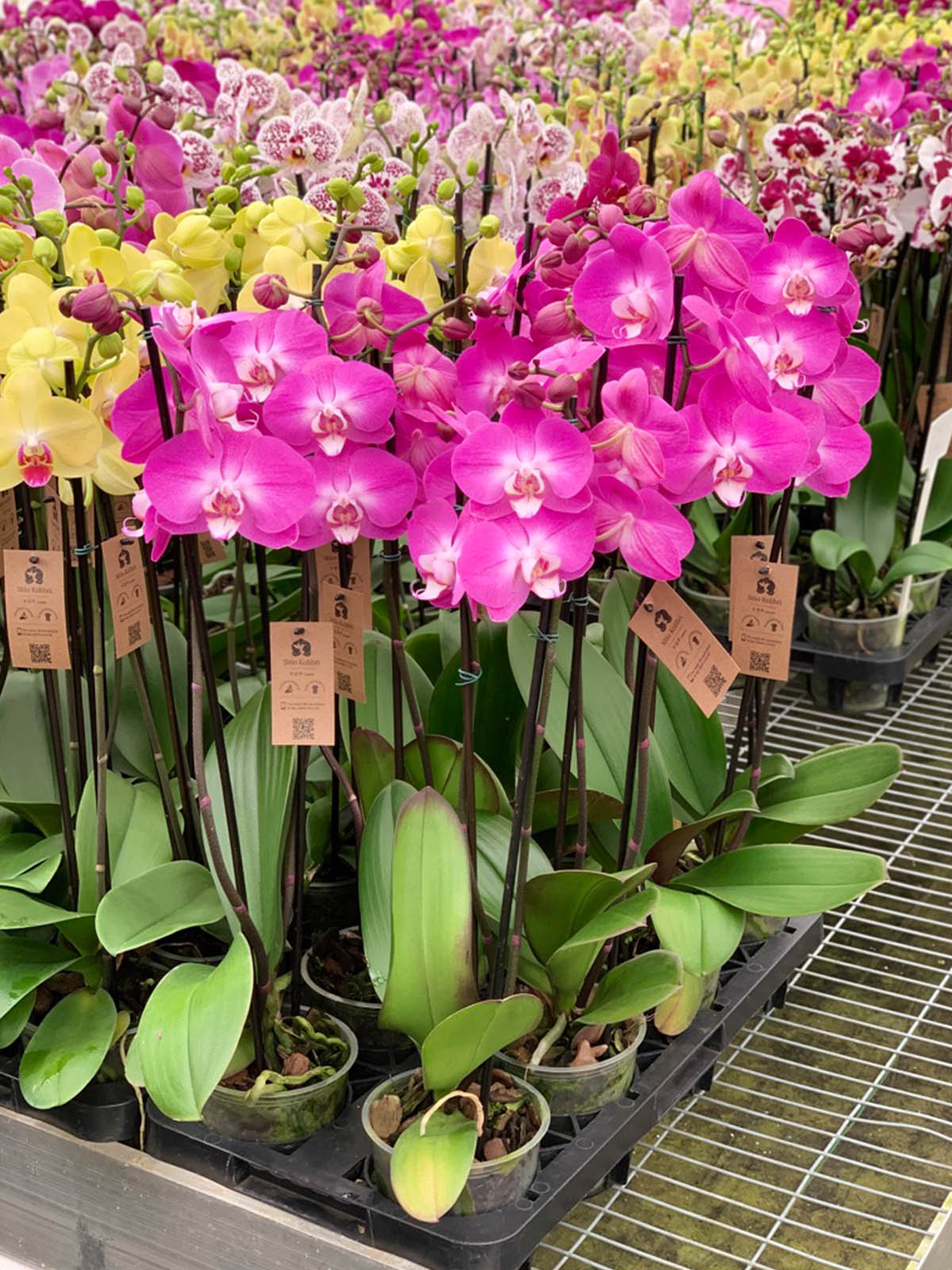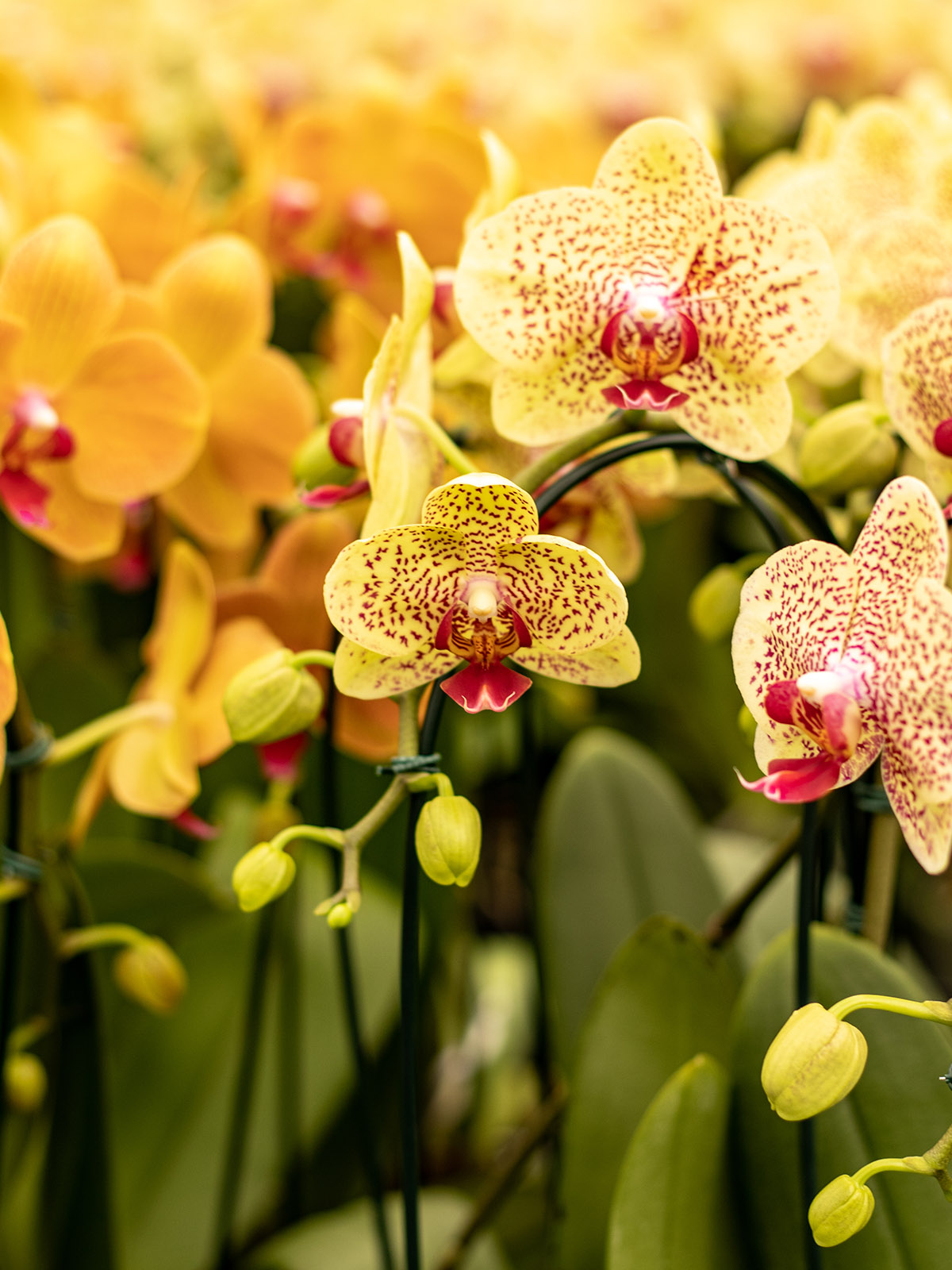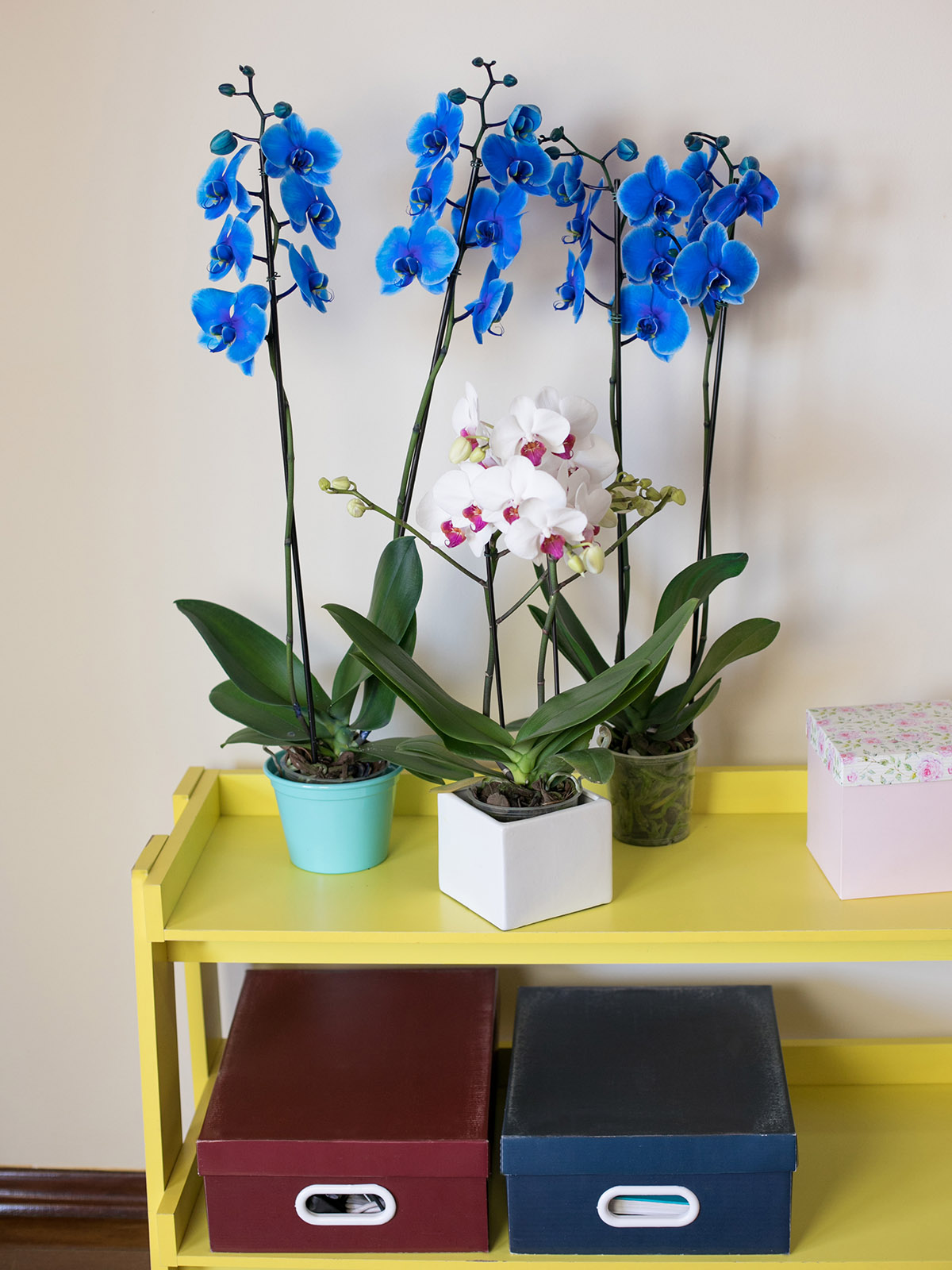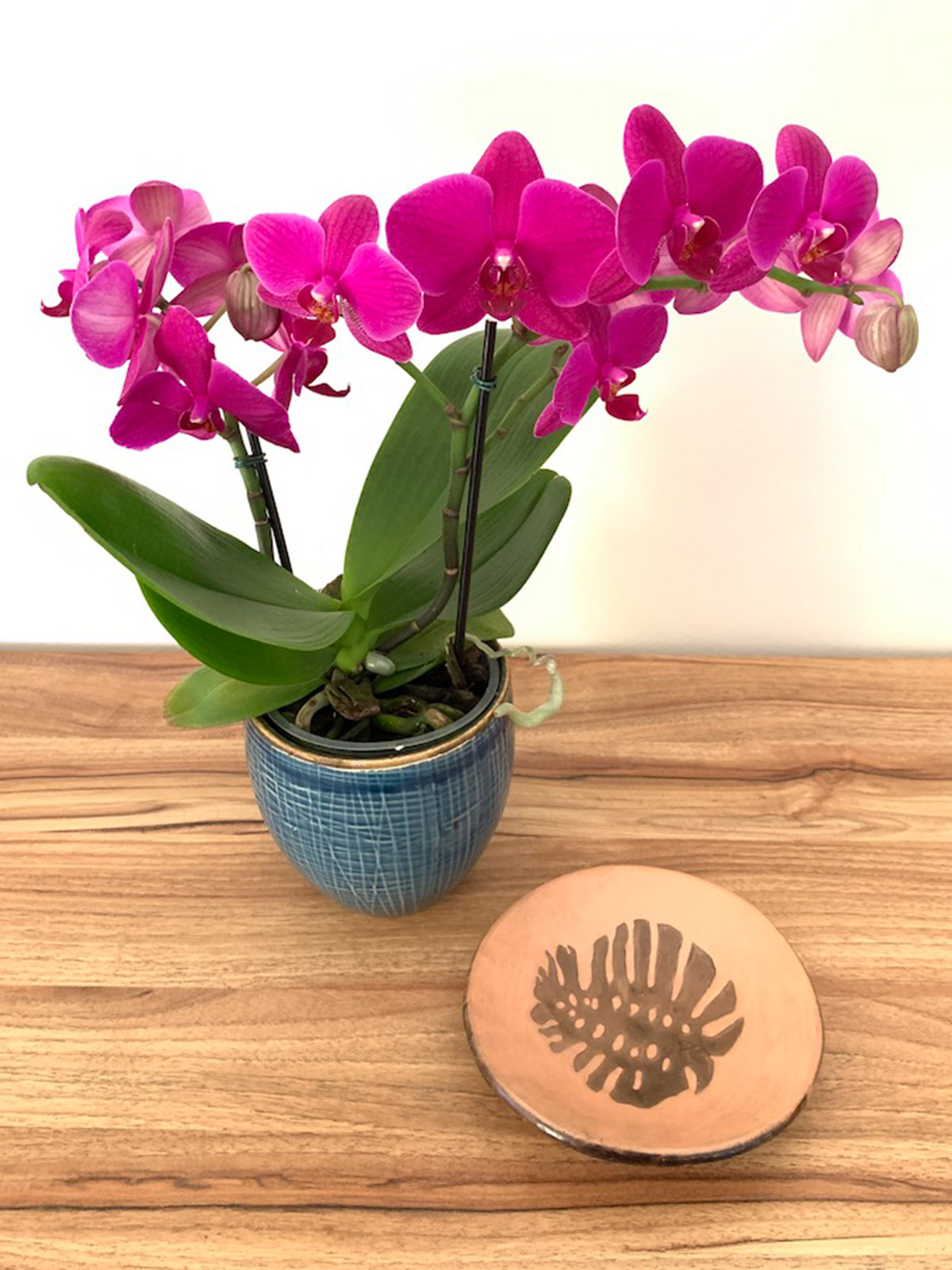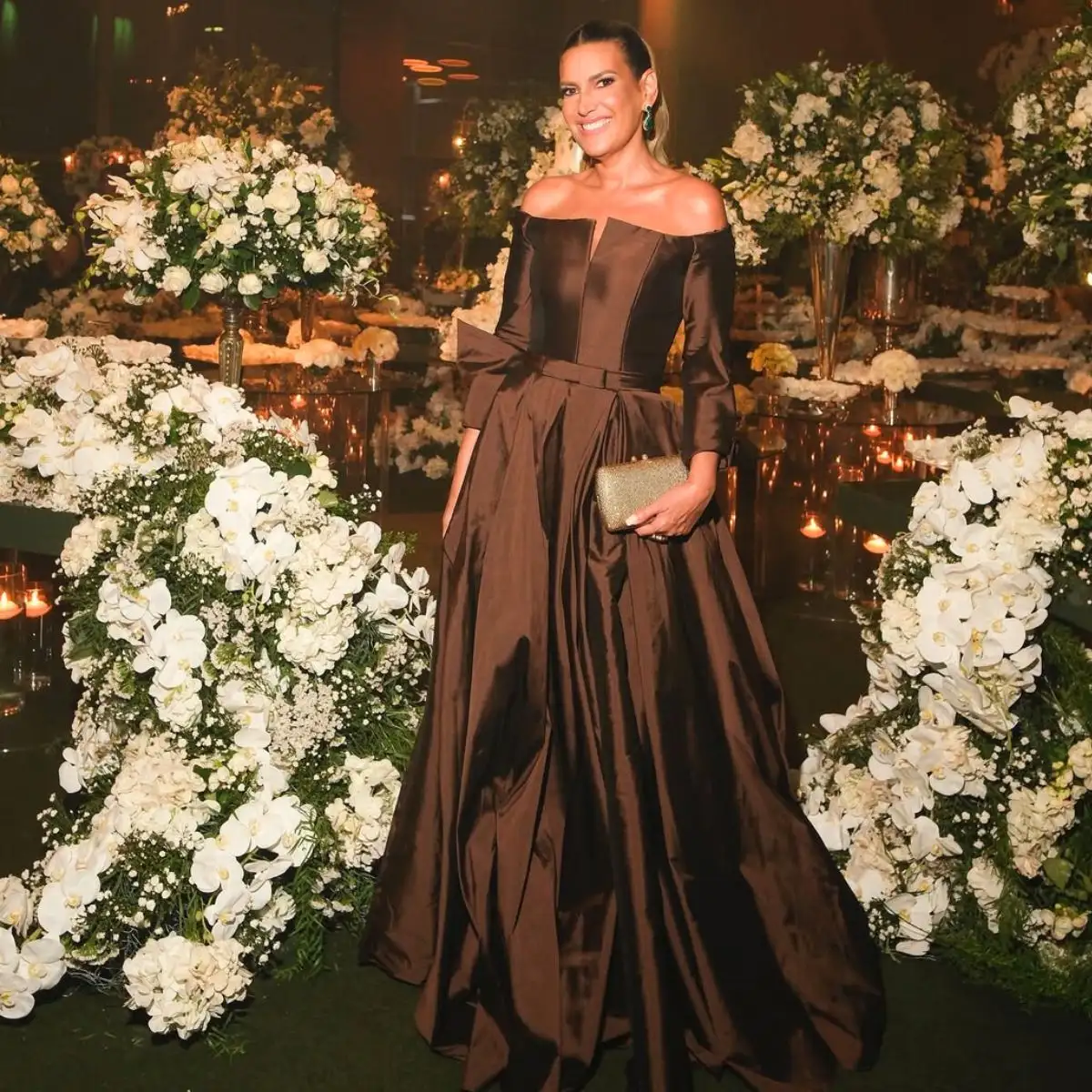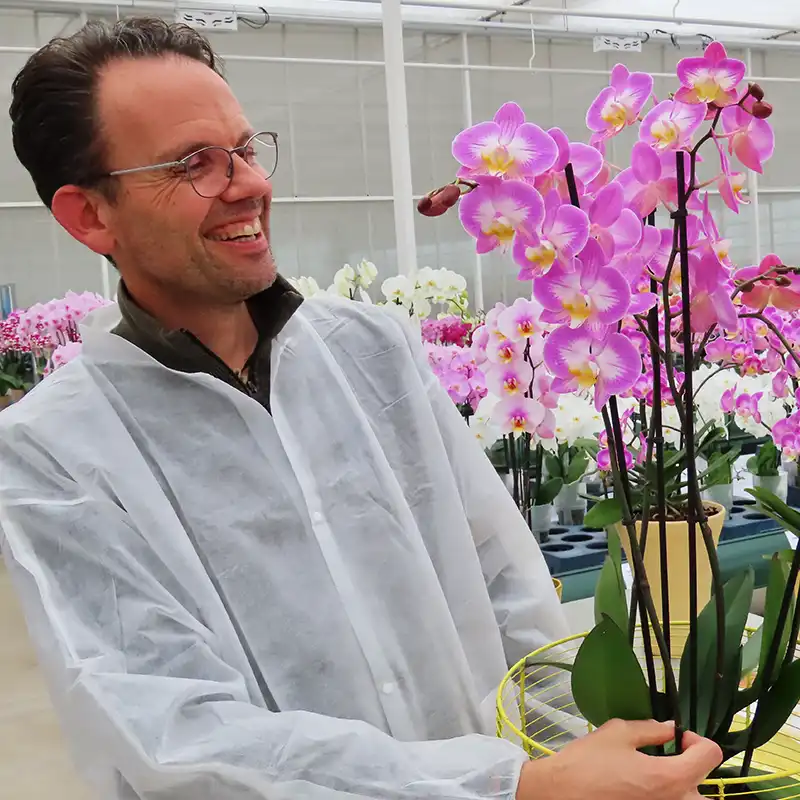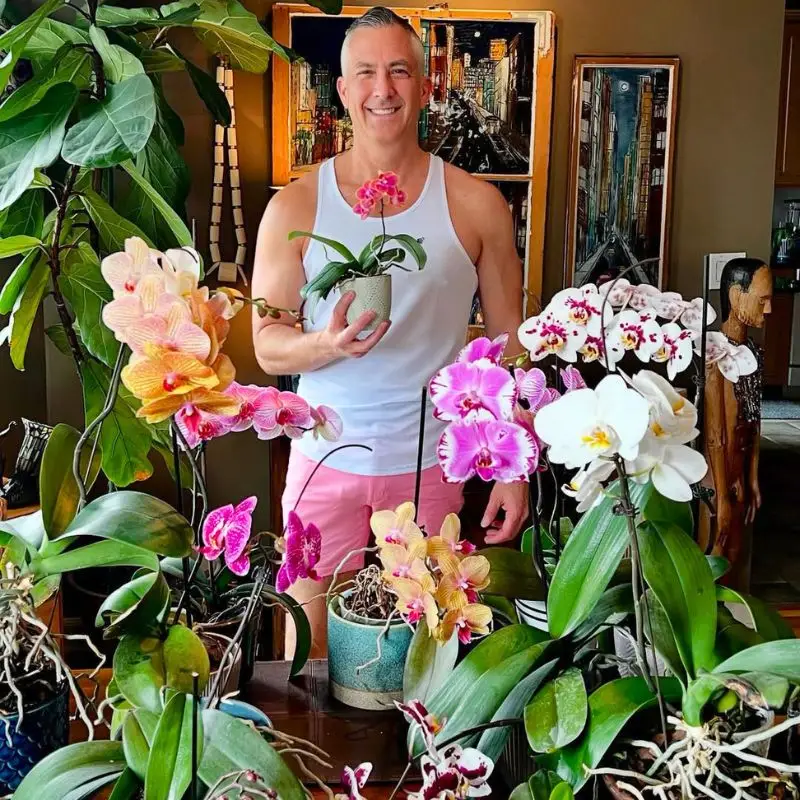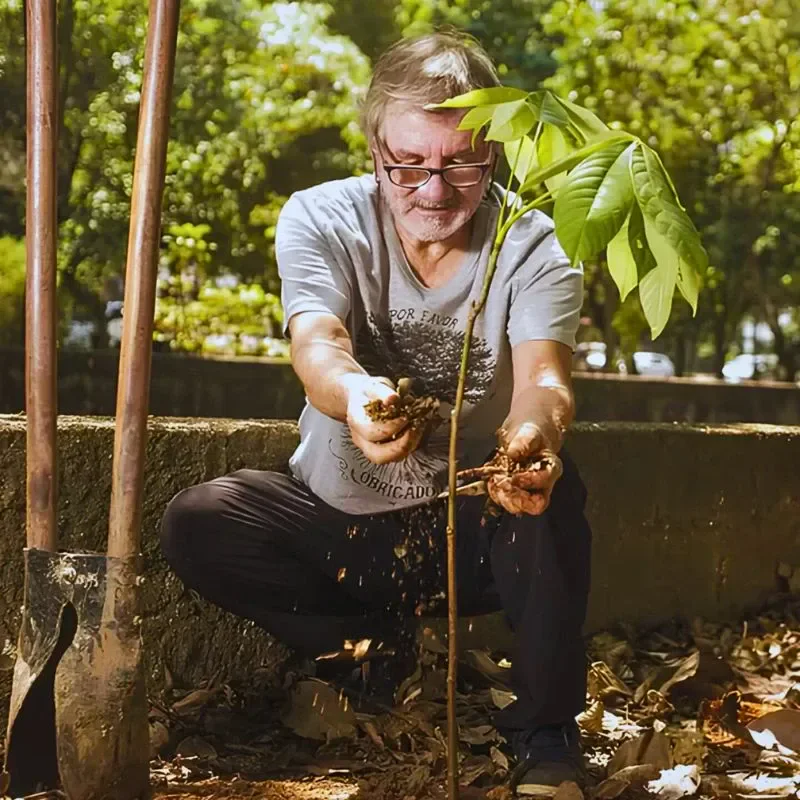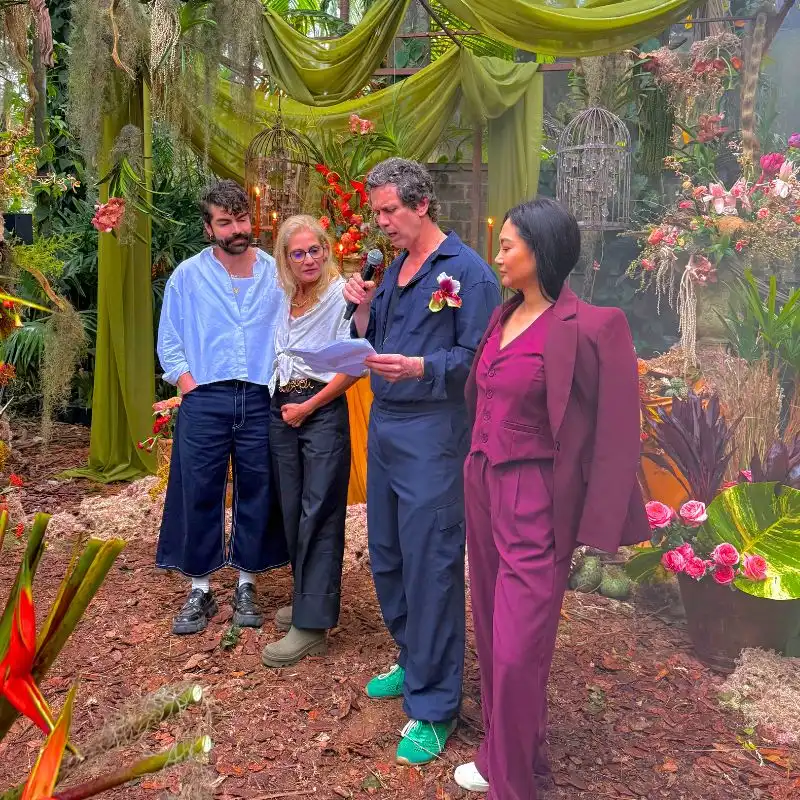The Netherlands is a country with a rich history in floriculture. So, why leave the perfect grounds for horticultural farming when you are passionate about flowers? This is the story of Sítio Kolibri, Dutch courage and curiosity in Brazil.
Growing Up Between Phalaenopsis
Regina Breg is one of the daughters of Theo and Lisette, the founders of the company Sítio Kolibri in Brazil. In an interview on Hortipoint in 2018, we read that Regina spent her childhood in the nursery growing up between the phalaenopsis and playfully getting to know the business.
Nowadays, Regina, her husband Mattheus, and her sister Gabriela are running the company. We would like to know all about how they manage to produce and sell their phalaenopsis in the Brazilian market. And what is the role of a breeder like Floricultura in their processes and success?
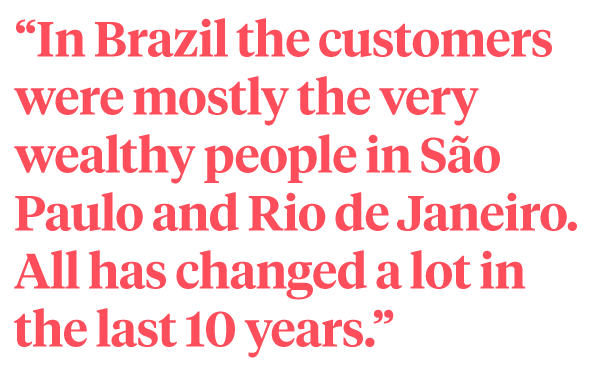
Can you tell us something about the unusual history of the nursery? How did Theo and Lisette Breg come to move to faraway Brazil?
Regina:
"My parents always say that it was a mixture of wanting more adventure in life; in 1981 they wanted to learn a new language and get to know another country. So they set foot on land in Brazil. They actually thought of moving on after a few years but they fell in love with the Brazilian people with their friendliness, and so they just stayed here.
In 1985 my father lost his job and the only possibility he encountered was a job at a grower with a greenhouse and a lot of cymbidium plants. He liked the thought of growing orchids and became a partner of this grower.
The cymbidium was not a great success - Holambra is too warm for cymbidium - but he had more luck as the first kalanchoe grower in Holambra. After five years my parents started their own company.
Nowadays, Theo and Lisette don't work anymore at the company, they are only partners and give advice. My sister Gabriela, my husband Mattheus, and I are responsible for the entire executive part of the company."
The Discovery of Phalaenopsis
It did not take long before the farmers of Sítio Kolibri discovered the phalaenopsis. Ever since 1994, they have been growing this plant, running to 100 percent production in 2012. Although Holambra is an ocean away from the Netherlands, the growers keep a close eye on Dutch trends and technology. After all, this Brazilian town was founded by Dutch immigrants; the name 'Holambra' is a contraction of 'Holland', 'America', and 'Brazil'. And the local auction has a rather Dutchified name: 'Veiling Holambra'. Following the trend from the Dutch market, Sítio Kolibri grows phalaenopsis in pot diameter 12cm these days. And they offer the blue phalaenopsis and even special shapes in the last few years, all according to the latest demand.
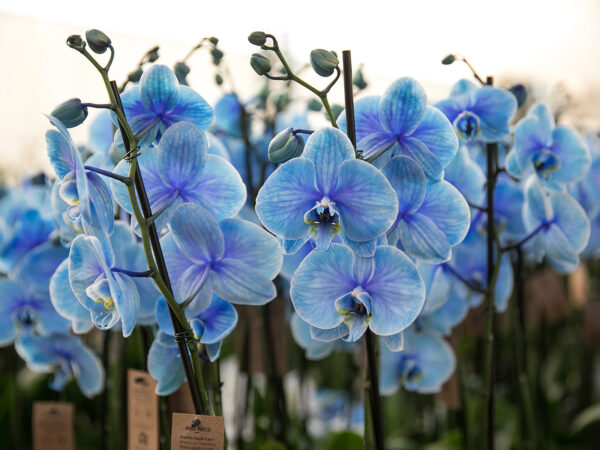
What caused the change towards growing solely phalaenopsis?
Regina:
"At the time my father was growing saintpaulia and kalanchoe. A lot of growers were growing saintpaulia, and the margins were low. My father visited the Trade Fair in Aalsmeer in November 1993, and the exhibit of Floricultura was the most important for him during that trip to the Netherlands; he wanted to grow another orchid more apt to the climate in Holambra. He already knew the company because of an old project they had in Brazil with cymbidium.
Also, Jac van der Weijden - the sales manager of Floricultura at that time - lived and worked in Brazil when my parents arrived here. He was actually my father's first boss. Jac suggested starting with phalaenopsis pot plants; in his words: "the pot plant of the future". I think this was a visionary remark when we remember that at that time Floricultura was only just starting to sell meristem plants. Phalaenopsis was at that time still included in the statistics in the Netherlands as 'other orchids'. The first two shipments in January 1994 and January 1995 were still mostly seedlings. The meristems were at the beginning one of the reasons we choose Floricultura!"
Do Brazilians like phalaenopsis?
Regina:
"In Brazil people were used to buy phalaenopsis in the 15 cm pot, with big white flowers. The customers were mostly the very wealthy people in São Paulo and Rio de Janeiro. We were the first to market the colored phalaenopsis all over Brazil and year-round. All this has changed a lot in the last 10 years. In the beginning, when we started with the 12 cm pot it was really difficult to convince the market that the plant was the same, the quality was even better, and the costs of logistics were lower - in transport as well as in the shops and supermarkets. Now the market is used to the product and it is easy to find phalaenopsis in 12 cm all over the country. And everybody is looking for these beautiful colored flowers."
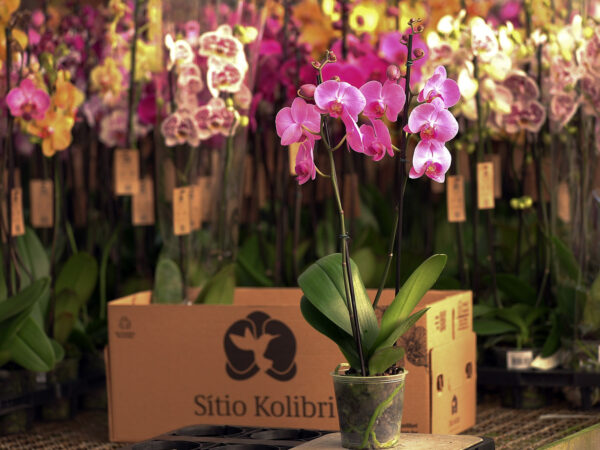
How do you sell your phalaenopsis, and how does that develop?
Regina:
"100% of our phalaenopsis are sold through Veiling Holambra. However, only 5 to 10% we send to be auctioned at the clock, while the other 90 to 95% is distributed directly to wholesale, supermarkets, flower shops, and decorators. We have several smaller chains of supermarkets that buy on a weekly basis, but also large brands like Carrefour, Walmart, or Pão de Açucar (Casino). Our plants are for the entire Brazilian market. As we work with a very wide range of colors and formats, we are able to attend the entire national market well. The phalaenopsis even go to Paraguay and Uruguay through wholesalers who buy our product at Veiling Holambra."
What do you think is the main reason for a florist in Brazil to buy phalaenopsis from Sítio Kolibri?
Regina:
"It's the quality of plants, especially durability, uniformity of flowers, flower size, a wide range of products within the phalaenopsis pot 12 group, coloring (we work with blue orchids in a collaboration with VG Orchids), phalaenopsis in different shapes (heart, spiral, round, cascade), and we are now working with the latest trend in the Netherlands, which are the phalaenopsis with large flowers and short stems, which we call Arcus."
What makes growing phalaenopsis so beautiful for you?
Regina:
"Phalaenopsis is one of the most beautiful orchids; that was especially true at the beginning when it was still a rare product. It has at the same time delicate flowers and very good durability. What we now like most is the fact that it gives the possibility to specialize in different products (shapes, colors, and pot sizes). This makes it possible to create your own market.
Another thing we like is the challenge to be always up to date with our installations. Our greenhouses are as modern as those in the Netherlands; we were pioneers in several new technologies here in Brazil. The fact that we grow the plants here in a sub-tropic climate implies that we have to adapt to those conditions. We have to heat year-round, and the same applies to cooling. Last year we installed a new boiler that is fully automated and runs on woodchips that are made from eucalyptus trees that are specially planted for this use.
And the next project is a park of 20,000 m2 with solar cells, enough to be self-sufficient. That will start running by the end of the year."
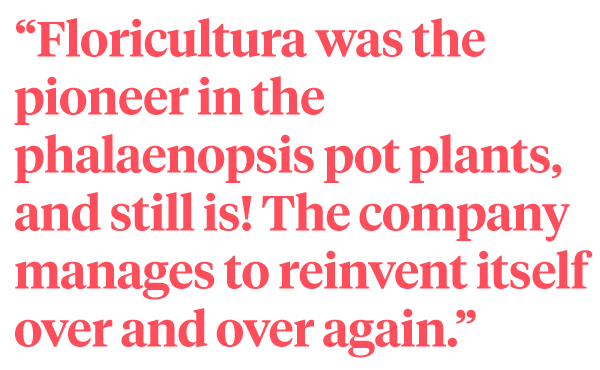
The Bond of Trust With Floricultura
Since the very start with phalaenopsis, over a quarter-century ago, Sítio Kolibri has been growing phalaenopsis from breeder Floricultura. We wonder how a long-lasting relationship like this stays that strong and how to maintain this.
Regina:
"The relationship that we have with Floricultura goes way back from the time our parents arrived in Brazil! As I said before Floricultura had a project at the time for the production of cymbidium cut flowers in Brazil, for export to the Netherlands.
Before starting Sítio Kolibri in 1989 our parents did already business with Floricultura, exporting cymbidium flowers. So they knew Floricultura as a very reliable business partner. But we imported our first 8,000 phalaenopsis in January 1994 and have been working with them ever since.
We have always learned a lot from Floricultura and they have opened up many paths and opportunities for us. When we started we had a very poor heating system, and through the years we made the steps toward the modern greenhouse, in part following their suggestions.
They also helped to develop the first cooling system in 1998. Since 2018 Floricultura also has a facility in Brazil! We helped them to develop and build those installations, and that was a very good experience for us; we learned a lot doing that.
In normal circumstances, we visit Floricultura at least once every year and they visit our property several times per year. In the first fifteen years, the support was mostly on technical issues and they still support us, although it is more on an equal basis; we learn from them and they from us. But in the last ten years, we discuss very often also new marketing ideas with them. Of course, the final decision is always ours, but it is good to have someone who knows what is happening in the world. We know their varieties very well and we trust the choices of new varieties and the quality of the product they make. The exchange of information and knowledge comes from both sides and this makes us have a bond of trust."
Which Floricultura varieties do you grow then?
Regina:
"We work with the Standard, Elastica, and Lingua series from Floricultura. With the varieties from those series, we can work with all of our concepts: The Blue Mystique series that is mainly represented by the blue orchids; the Heart, Spiral, Round, Cascade, Arcus, Glass shapes; and our standard series. Floricultura was the pioneer in the phalaenopsis pot plants, and still is!
The company manages to reinvent itself over and over again. In short: quality, reliability, and innovation. Just a curious note: Floricultura is the Portuguese word for 'flower shop'. So for many years, Floricultura BV, as perhaps the only Dutch company doing business in Brazil was known as BV by the Brazilian growers. The name for them was Flower Shop BV."
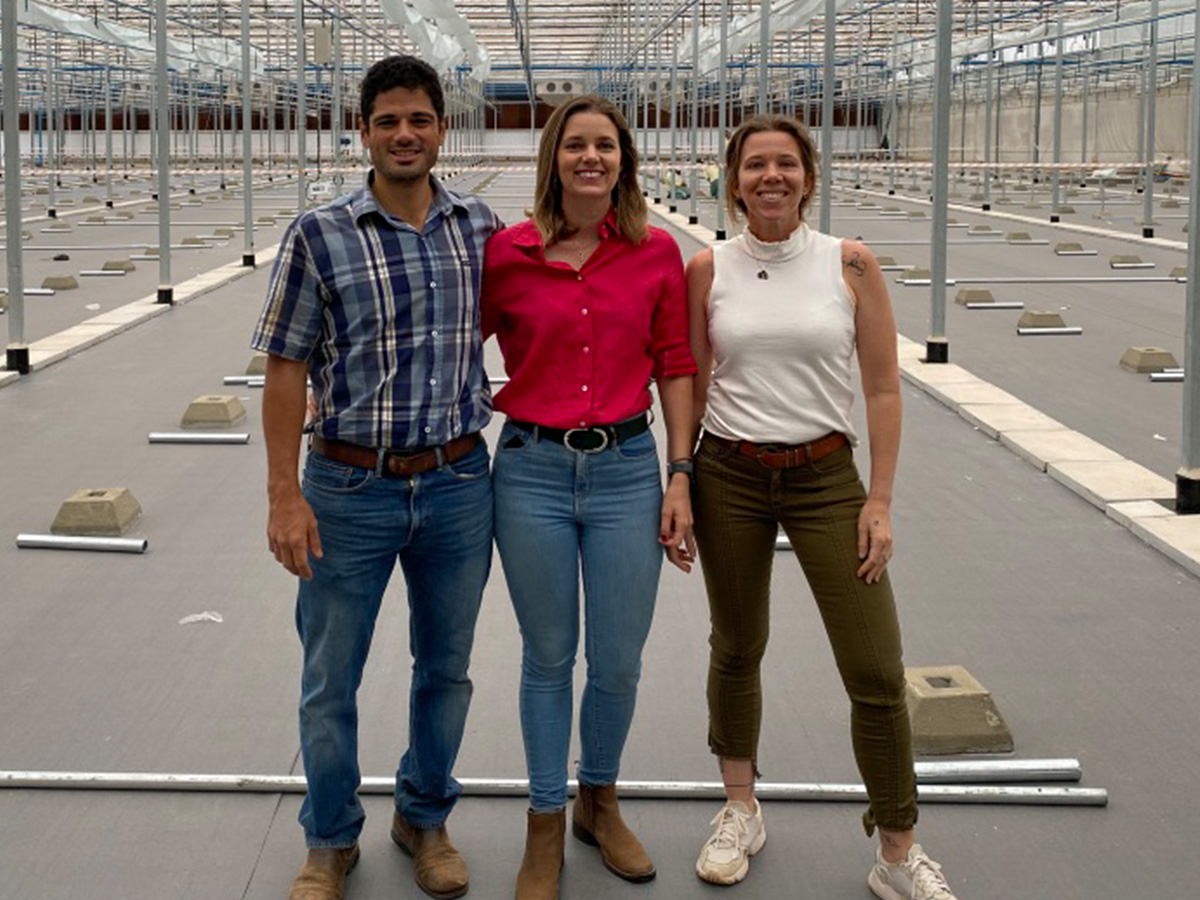
What does the future hold for Sítio Kolibri?
Regina:
"COVID-19 affected us directly last year at the time of Mother's Day sales. But we managed to have a good recovery in the second half of the year. The scenario proved to be promising and that's why we decided to expand our greenhouse now in 2021 and build it with new improvements over the last greenhouse we build.
Some factors that have affected us indirectly are the high exchange rate of the euro, which makes the cost of young plants much higher for us, and raw material costs both for the cultivation and for the construction of new greenhouses have been raised sky-high as well. But the prices we get for our plants are good also.
We are very confident that Sítio Kolibri has a good future. We are what we are in part thanks to the good quality and technical support of Floricultura. In those 30 years, both Floricultura and Sitio Kolibri have changed, and grown a lot. But with the new generation on both sides, we think the partnership just has grown stronger."
